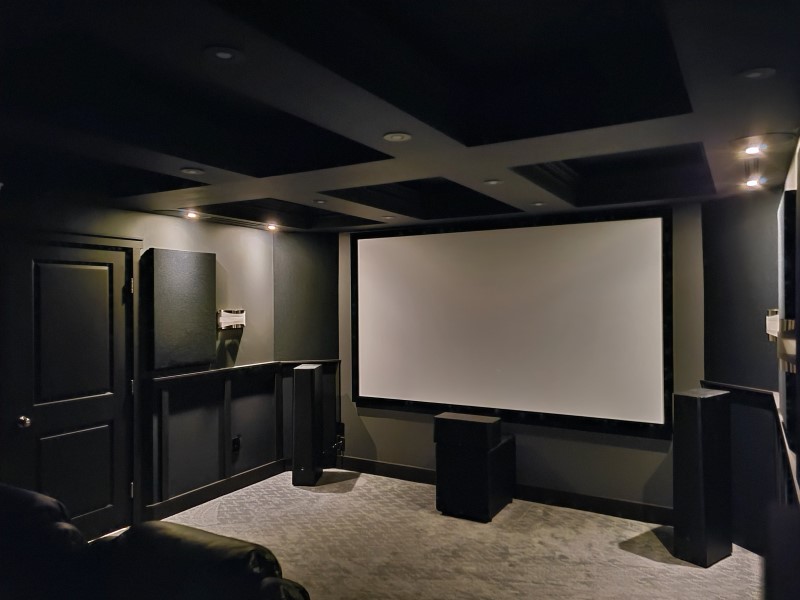Do I Need to Treat the First Reflection Points for Surround and Back Speakers?
We talk a lot around here about the importance of room treatments. Acoustic panels are one of the best upgrades you can make to your home theater. If you decide to add acoustic panels to your theater, you probably want to put them in all the right places. The first reflection points of your main speakers are often cited as an important place for an acoustic panel. But what about other speakers in your system? Do you need to treat the first reflection points of your surround and back speakers? Let’s discuss!
What is a First Reflection Point
If you haven’t read our acoustic panel placement guide, here’s a quick refresher. The first reflection point of your main (front left and right) speakers is the point on the closest wall where the sound will bounce off and reflect directly to your seat. Placing a panel on that wall will absorb that sound so that the reflected sound is less distracting. This improves stereo imaging and dialogue intelligibility.

What About Other Speakers?
We don’t often talk about the first reflection points of other speakers in your system. With the center speaker, this is because the first reflection points are the ground or the ceiling. With the ground, the carpet usually acts as an absorber. The ceiling may or may not have a first reflection point. Even if it does, many people wouldn’t hang a panel up there so it really isn’t worth mentioning.
The other speakers in your system, your surrounds, backs, and Atmos speakers, usually don’t have a clear first reflection point to treat. Even if they do, the point of treating your first reflection points of your main speakers is to improve stereo imaging (surrounds and backs don’t do much of this) and there isn’t much dialogue coming from these speakers. Surrounds and backs are meant to be more diffuse so specifically treating the first reflection point of these speakers isn’t strictly necessary.
If you can identify the first reflection point of any speaker in your system, and you feel you can place a panel there, it is usually a great place for a panel. It simply isn’t super important for improved room acoustics.


